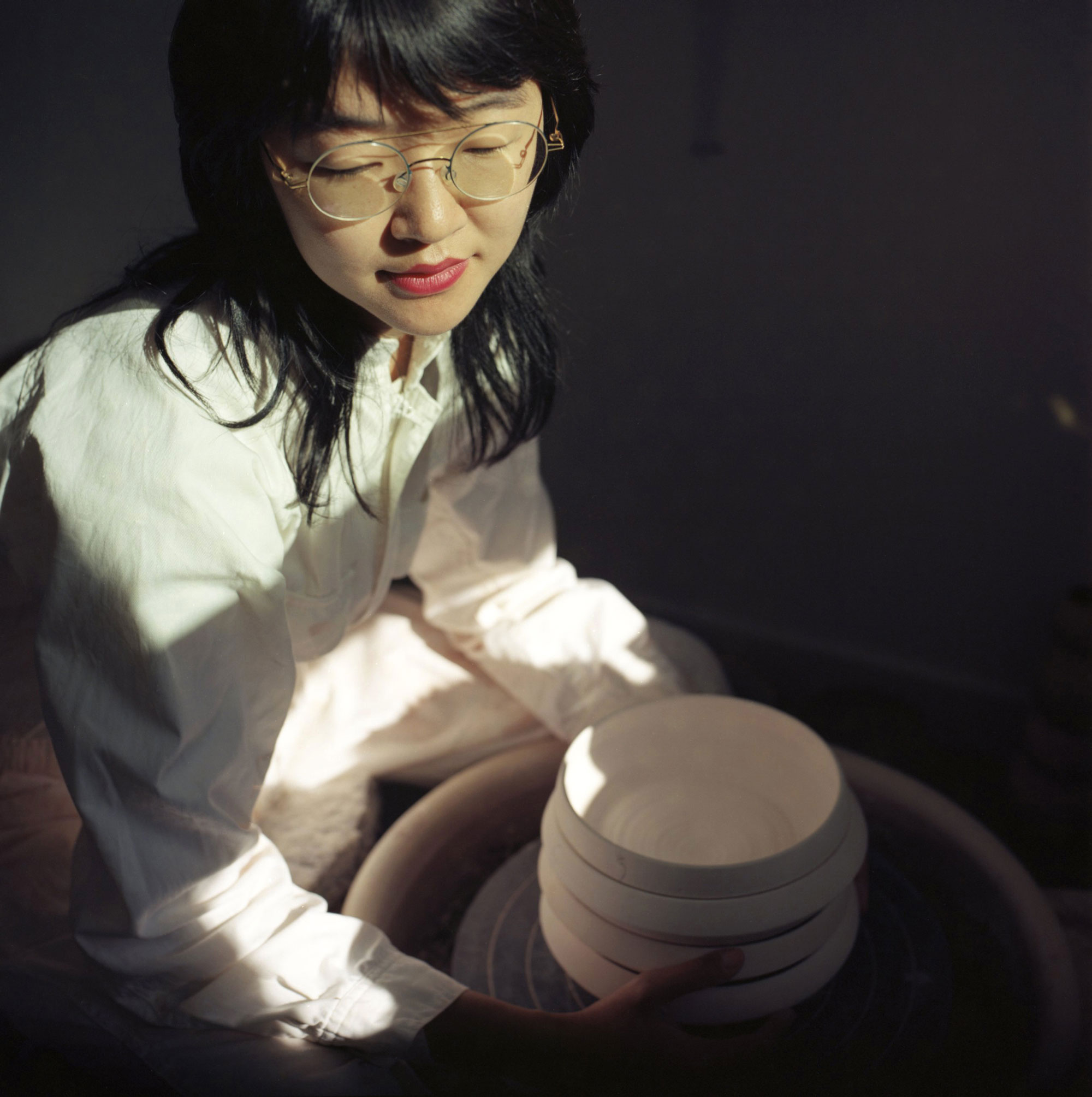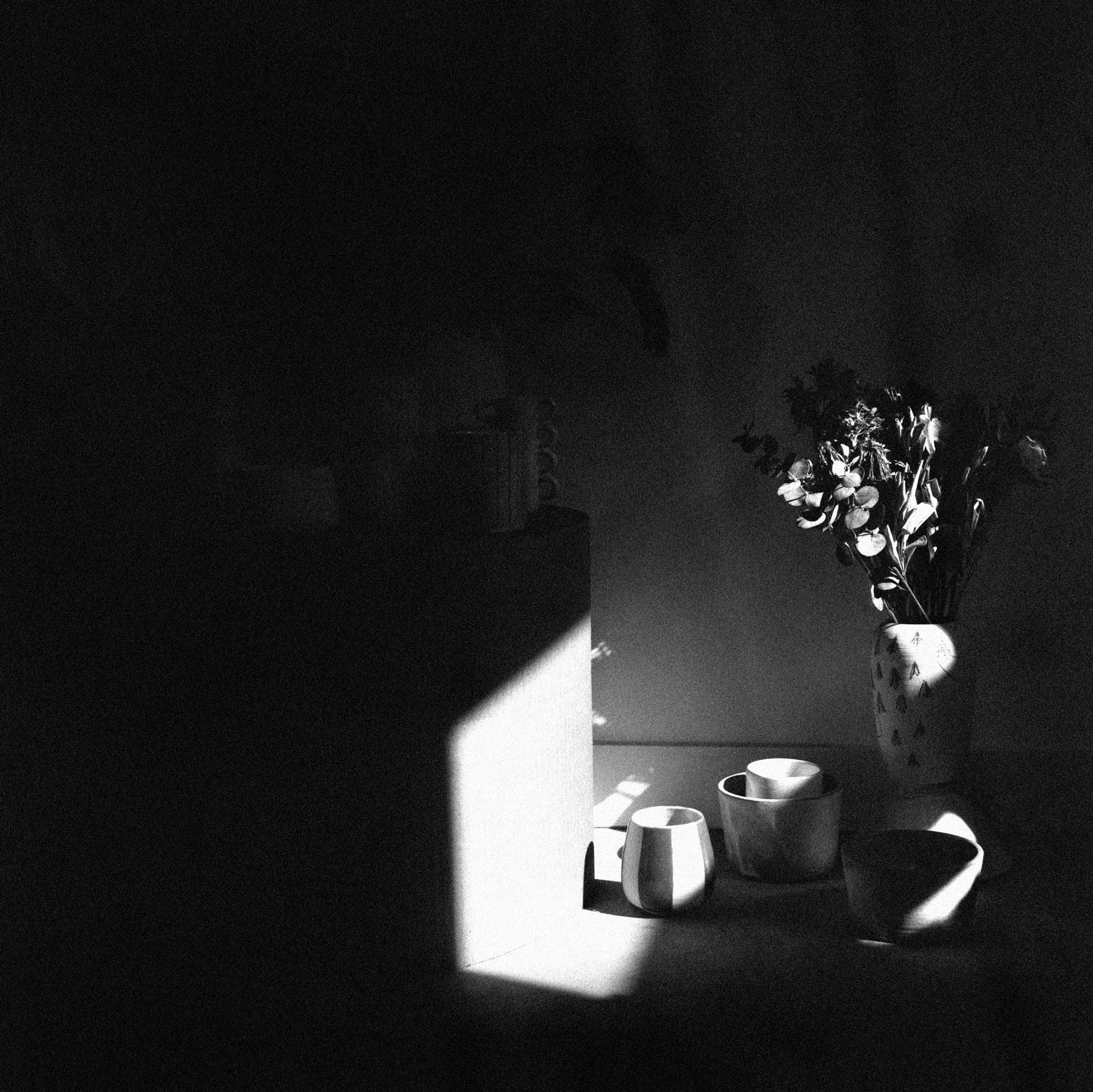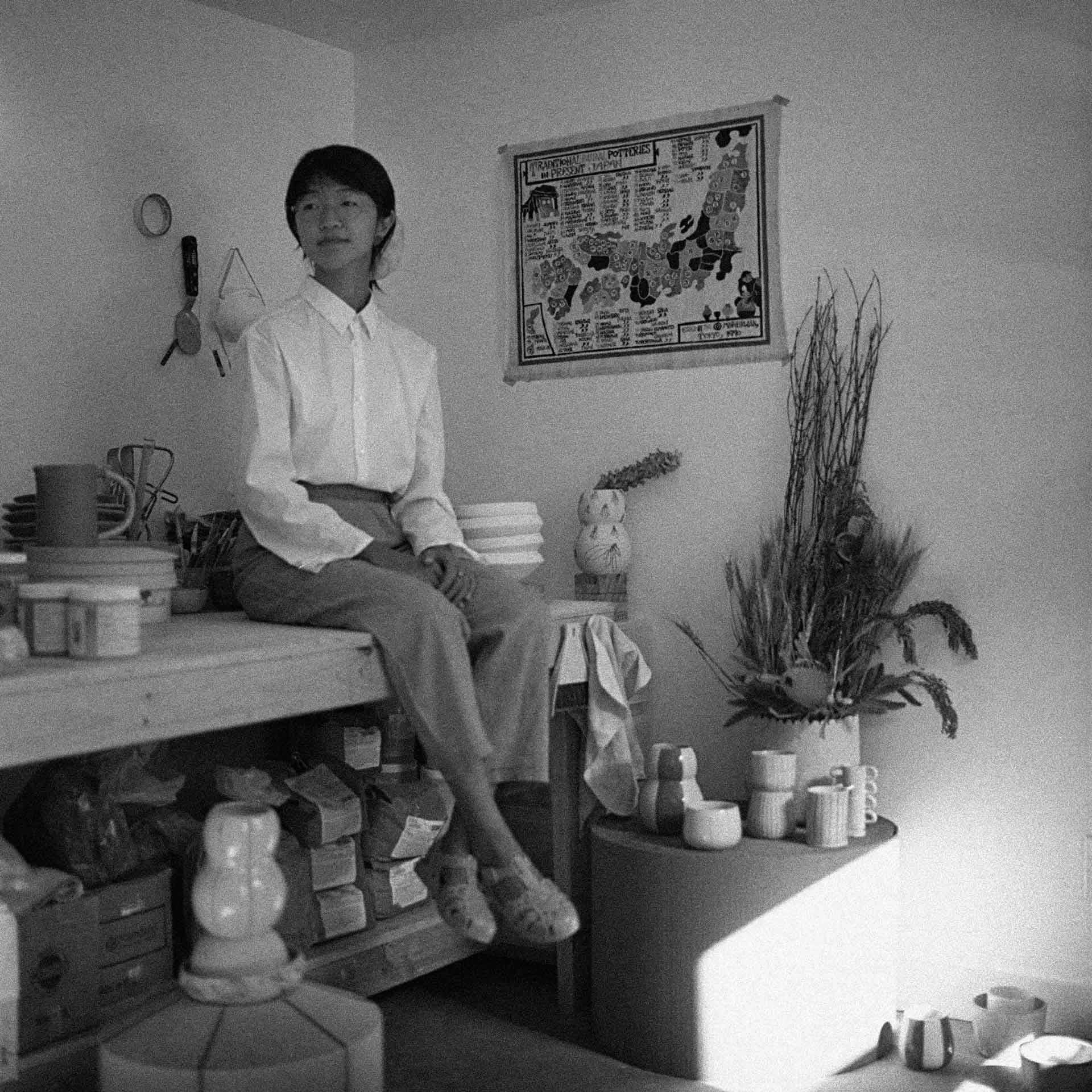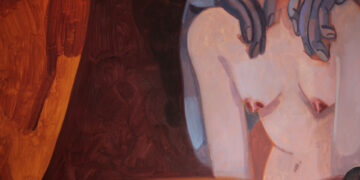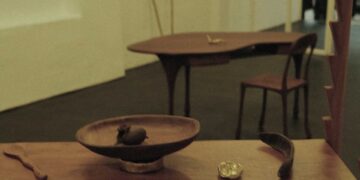I have always had a studio at home or nearby to start the day early.
I wake up, do the basic Ayurveda rituals – coconut oil and warm water, 30 minutes of stretching to get the blood circulating to the extremities – hands and feet, 6 minutes of meditation. I vacuum the house at least every other day. A clean house is a happy house. I prepare my hot chocolate, coffee with milk, or tea with milk and go out for a walk with Valentino, our dog. This part is what gives me a routine and clears my mind to start the day in the studio.
I go down to my space, read a book that has been part of my research for about 40 minutes, and start working with clay. Working with ceramics involves dirt, so once I start, I continue until the end of the day on the same piece.
The day-to-day routine in the studio depends a lot on the stage of the process I’m in, but usually, for 2 weeks of the month, the focus is on modeling and finishing the pieces, and in the third week, I glaze. I try not to sit at the computer in the first part of the day because emails tend to consume time, and the day ends up passing without me having done the manual work. I also find that I am more productive in the early morning or after dinner. When I have a lot of work to deliver, I go down to the studio again after dinner and continue working a bit more before bedtime, or else the end of the day is the time I gather with my partner, talk, listen to music, prepare dinner, and listen to more music before going to bed.
The separation/connection of the home and studio being in the same place is something I discovered that works well for me. I optimize the time between coming and going, but the spaces are minimally separated, avoiding distractions. I can go back to work a bit more in the evening before bedtime.
All my research is directly connected to life around, to the small events of the days and their rituals. A work of colors, repetition of forms, and gestures that correspond to the practice of manual craftsmanship and question the functionality of the object versus its sculptural character. The utilitarian object produced in a small edition or as a unique piece is the record of the investigation of this process of making.
For instance, clay is the material I use the most. Manual modeling techniques and the use of the wheel for the production of works, slips, and sculpted clay with patterns that add texture and color to the simple shapes of objects that occupy people’s homes. The works undergo firings at various temperatures, depending on the result I want to achieve. I also resort to the use of different clays, transitioning from lighter to darker and vice versa, to obtain different effects, textures, and colors using the same glaze color palette. Rarely do I draw on paper before making. Experimentation happens directly in the modeling; for a larger-scale piece, I create a simple small model to understand the proportions of the object.
My universe of references also walks through the Japanese tradition of manual making, craft, mingei. I believe it is the way I found to approach my ancestors. Granddaughter of Japanese immigrants, never having visited Japan, I daydream, creating my idea of this country and dealing with the feeling of not belonging anywhere.
You can find out more about Dani at https://danielleyukari.com/ @danielle.yukari
Photos: Anita Goes
Flower Design & Set Design: Green Sprout Studio @greensproutstudio33

